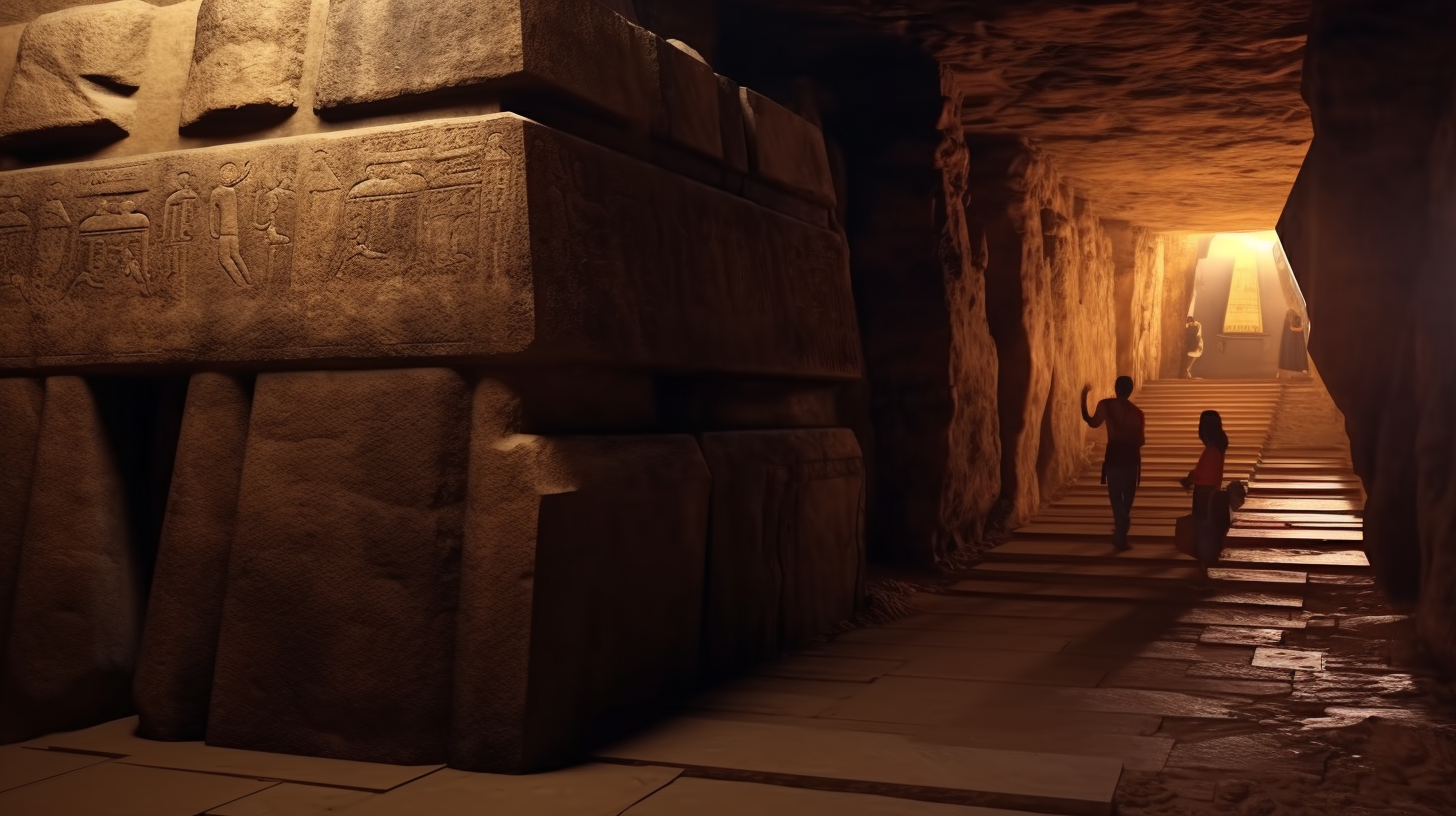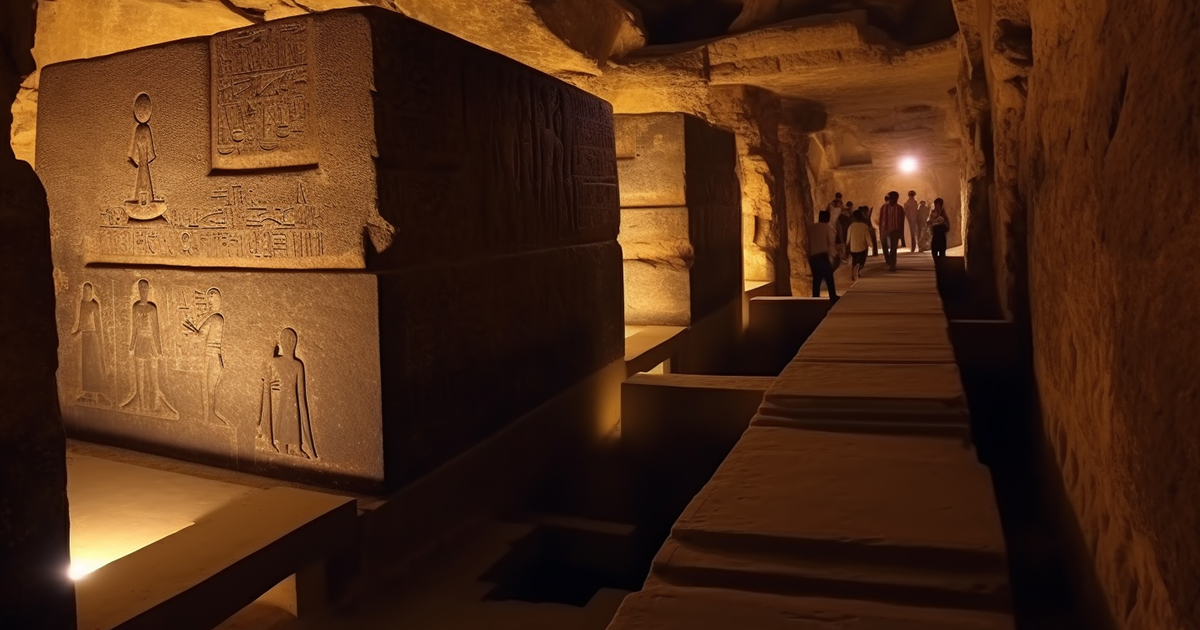A Peek Inside
Back in 1850, amidst the sprawling sands of Sakara, Egypt, a remarkable revelation unfolded. Auguste Mariette, a French Egyptologist on a mission to unearth ancient manuscripts for the Louvre Museum in Paris, stumbled upon a peculiar sight. Beneath the desert’s shroud, concealed by massive rocks, he came across what appeared to be the entrance to an underground chamber. Intrigued, Mariette cleared away the sand and utilized explosives to unveil the passage to a tomb complex known as the Serapium. Fast forward to April 2018, ancient astronaut theorist Giorgio Tsoukalos and Egyptian Egyptologist Rami Ramani set out on a quest to explore this enigmatic site.
Unraveling the Enigma of the Serapium at Sakara
The name “Serapium” or “Serapeum” stems from the fusion of the bull deity Apis and the god Osiris, entwined in mystery. Deep below the desert expanse lies a 790-foot meandering corridor adorned with meticulously carved alcoves within the limestone rock. These alcoves cradle 24 colossal stone sarcophagi, towering over 10 feet in height and measuring around 13 feet in length by 7.5 feet in width. Yet, a puzzling query lingers among experts and enthusiasts alike – the enigma of how the ancient Egyptians transported these mammoth granite boxes to this cryptic subterranean chamber.

A Riddle Yet to be Deciphered: The Purpose of the Serapium
Despite relentless scrutiny and exploration, the purpose behind these sarcophagi remains shrouded in ambiguity. Traditionally, Egyptologists and archaeologists surmise that these imposing edifices were destined to house the remains of revered Apis bulls. However, the discovery that only one tomb contained animal remains, while the others stood empty, challenges this notion. As such, the mystery deepens, prompting contemplation on whether the Serapium harbors secrets beyond the surface.
The Divine Connection Through the Apis Bull
It’s imperative to recognize that the ancient Egyptians did not venerate animals; rather, they viewed them as messengers of the gods. The Apis bull symbolized Osiris, entwined with celestial bonds. Legend has it that the inaugural Apis bull emerged when a divine ray of light struck a cow, birthing this sacred entity. This celestial association reflects in the precise artistry of the sarcophagi, crafted meticulously from basalt renowned for its formidable nature. The flawless polishing with impeccable 90-degree angles on their sides and bottoms elevates the enigma surrounding their genesis.
Scripted Passages for an Eternal Voyage
The inscriptions ensconced on the sarcophagi within the Serapium offer vital glimpses into ancient Egyptian beliefs. The “false doors” played a pivotal role in ushering the spirit and soul of the mummy into the afterlife. These inscriptions were pivotal in ensuring the journey of the Apis bulls towards eternal bliss, where they could reunite with Osiris in the ethereal domain.
An Epoch of Cosmic Encounters in Egypt’s Golden Age
Ancient chroniclers like Herodotus, Strabo, and Eusebius hint at a long-gone epoch in Egypt known as the Golden Age, possibly tracing back to 10,500 BC. Some conjecture that the enigmas of the Serapium might echo remnants from this cryptic era, a time when humans purportedly shared the planet with deities. As per the ancient astronaut hypothesis, these deities were not mere mythic entities but visitors from extraterrestrial realms. Some even propose that the Apis bull figure carved into a sarcophagus signifies a linkage to the cosmos rather than merely a receptacle for embalmed bulls.
Observation:
Final Musings
The Serapium at Sakara remains a conundrum, captivating experts and enthusiasts alike. Its monumental stone sarcophagi, intricate craftsmanship, and inscriptions hint at a profound cosmic link. While the true purpose of these monuments remains a puzzle, the mystique of the Serapium beckons us to delve into the ancient enigmas of Egypt, where the boundaries between myth and reality blur, and the specter of extraterrestrial influence looms in the annals of history.
